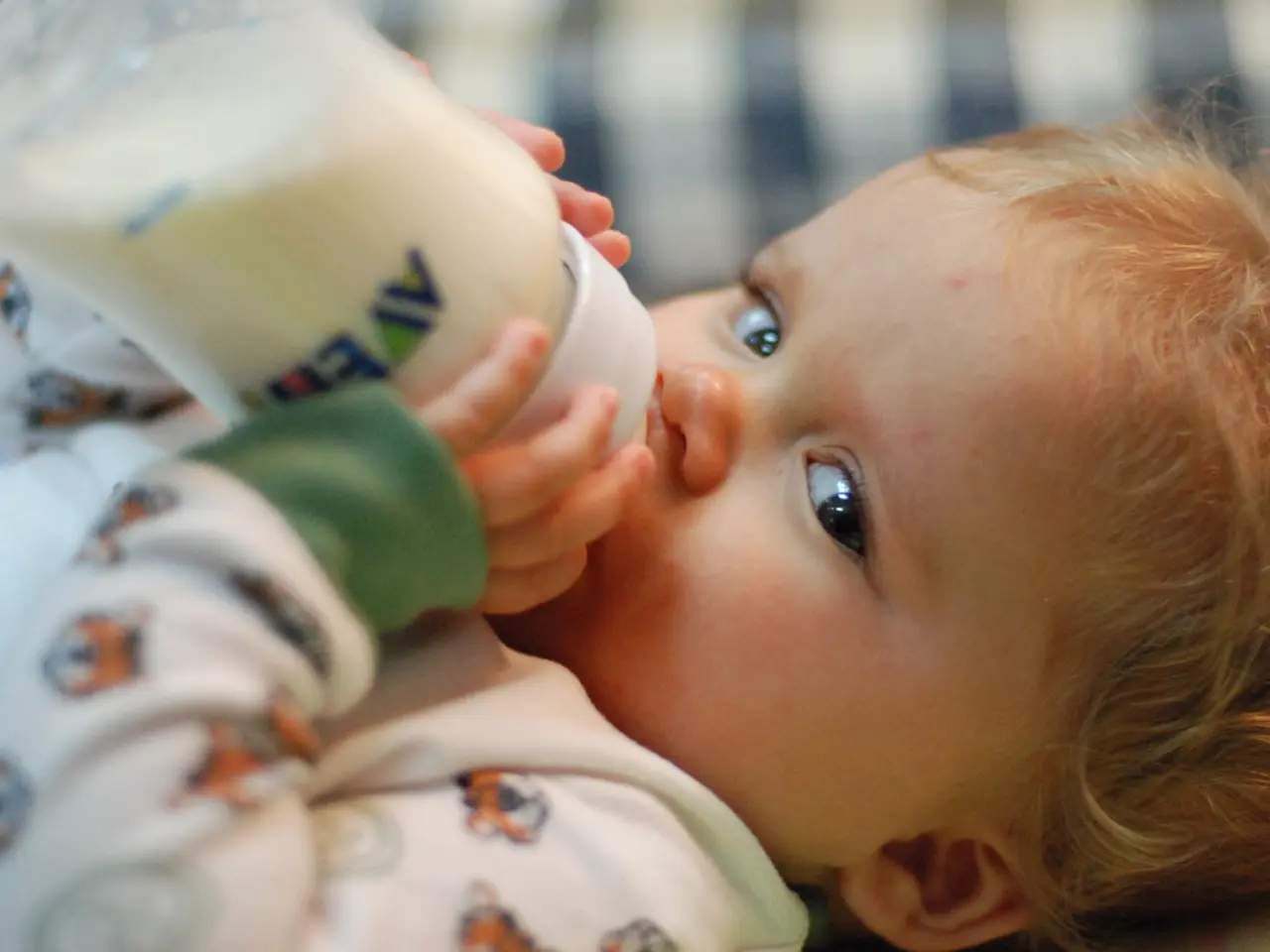On-the-Move Baby Nutrition: Feeding Options During Journeys
Traveling with a baby can be an exciting, yet daunting, experience. To ensure that your little one's nutritional needs are met and their comfort is maintained, careful planning and adaptation are key. Here are some practical strategies for breastfeeding, bottle-feeding, and introducing solid foods, as well as managing feeding schedules and addressing potential challenges.
Breastfeeding
Maintaining frequent nursing sessions is crucial for breastfeeding babies. Aim for approximately 8-12 feedings per day, with sessions approximately every 2-3 hours, as newborns typically require this frequency [4]. Stay well-hydrated and nourished to support milk production; carry water and nutrient-rich snacks to help sustain breastfeeding during travel [4][5].
Use breastfeeding during takeoff and landing on flights to help relieve ear pressure through sucking and swallowing, which can reduce infant discomfort [2]. Bring a portable nursing cover or find private, comfortable spaces to breastfeed away from distractions.
Bottle-feeding
For bottle-fed babies, feedings can be timed similarly to breastfeeding, maintaining usual frequency. Use feeding during airplane takeoff and landing as well to help equalize ear pressure and soothe the baby [2]. Carry ample pre-measured formula or breast milk in travel-friendly containers, ensuring compliance with airline regulations if flying. Keep bottles and feeding equipment clean and sanitized as much as possible; consider disposable liners or bottles if washing facilities are limited.
Introducing Solid Foods
Introduce solids gradually before traveling if age-appropriate (typically around 6 months), so your baby can adjust to new foods in a familiar environment. Pack familiar, easy-to-serve solid foods that travel well, such as purees in disposable pouches, small snacks, or sealed containers. Maintain usual meal timing as much as possible, with flexibility for travel delays or schedule changes. Carry utensils, bibs, and wipes for convenient feeding on the go.
Managing Feeding Schedules and Challenges
Plan feeding times to coincide with travel phases that reduce discomfort or fussiness, such as during takeoff and landing in flights [2]. Attempt to replicate the baby’s usual feeding and sleep environment at the destination to minimize disruption, such as familiar feeding routines and schedules [1][3]. Manage jet lag or time zone changes by gradually shifting feeding and sleeping schedules before travel, and adjust as needed after arrival [3].
Prepare for possible feeding-related fussiness due to changes by staying patient and flexible; use comforting feeding techniques like skin-to-skin contact or soothing motions. For breastfeeding mothers, seek support from healthcare providers or lactation consultants if challenges arise, such as latching issues or milk supply concerns [4]. Remember safe sleep and feeding guidelines to ensure the baby’s safety in unfamiliar environments, like keeping feeding areas clean and avoiding hazards around sleep spaces [1].
These strategies collectively help maintain nutritional needs, comfort, and feeding safety for babies during travel across different feeding methods while managing schedule shifts and environmental challenges. Consider using pre-sterilized disposable bottles for convenience while traveling, and encourage breastfeeding as the most convenient option for traveling, offering numerous benefits for both the baby and the mother.
By following these practical strategies, you can help ensure a smooth and enjoyable travel experience for both you and your baby. Happy travels!
[1] American Academy of Pediatrics. (2016). AAP policy statement: Safe sleep for infants. Pediatrics, 138(5), e20162938.
[2] American Academy of Pediatrics. (2019). AAP technical report: Travel with infants, children, and adolescents. Pediatrics, 144(4), e20193143.
[3] American Academy of Pediatrics. (2019). AAP technical report: Jet lag and shift work in infants, children, and adolescents. Pediatrics, 144(4), e20193142.
[4] American Academy of Pediatrics. (2020). AAP policy statement: Breastfeeding and the use of human milk. Pediatrics, 146(3), e2020008863.
[5] American Academy of Pediatrics. (2021). AAP clinical report: Nutrition during breastfeeding. Pediatrics, 147(1), e2020107710.
- To ensure a baby's nutritional needs are met during travel, maintain frequent nursing sessions for breastfeeding babies (approximately 8-12 feedings per day), stay hydrated and nourished, and carry water and nutrient-rich snacks.
- For bottle-fed babies, feedings can be timed similarly to breastfeeding, and use travel-friendly containers for formula or breast milk, ensuring compliance with airline regulations if flying.
- Gradually introduce solid foods before travel if the baby is old enough (around 6 months), and pack easy-to-serve, familiar solid foods for convenient feeding.
- Plan feeding times to coincide with travel phases that reduce discomfort, like during takeoff and landing in flights, and attempt to replicate the baby's usual feeding and sleep environment at the destination.
- Manage jet lag or time zone changes by gradually shifting feeding and sleeping schedules before travel, and stay patient and flexible during potential feeding-related fussiness.
- For breastfeeding mothers, seek support from healthcare providers or lactation consultants if challenges arise, such as latching issues or milk supply concerns.
- Ensure the baby's safety in unfamiliar environments by following safe sleep and feeding guidelines, like keeping feeding areas clean and avoiding hazards around sleep spaces.





